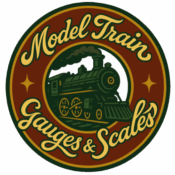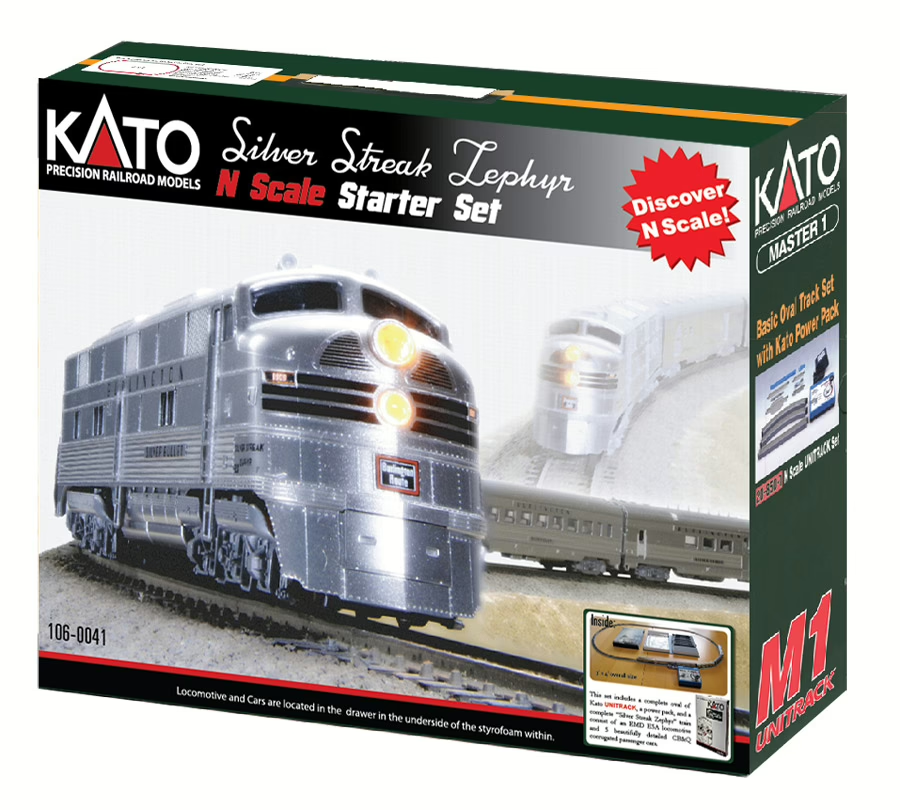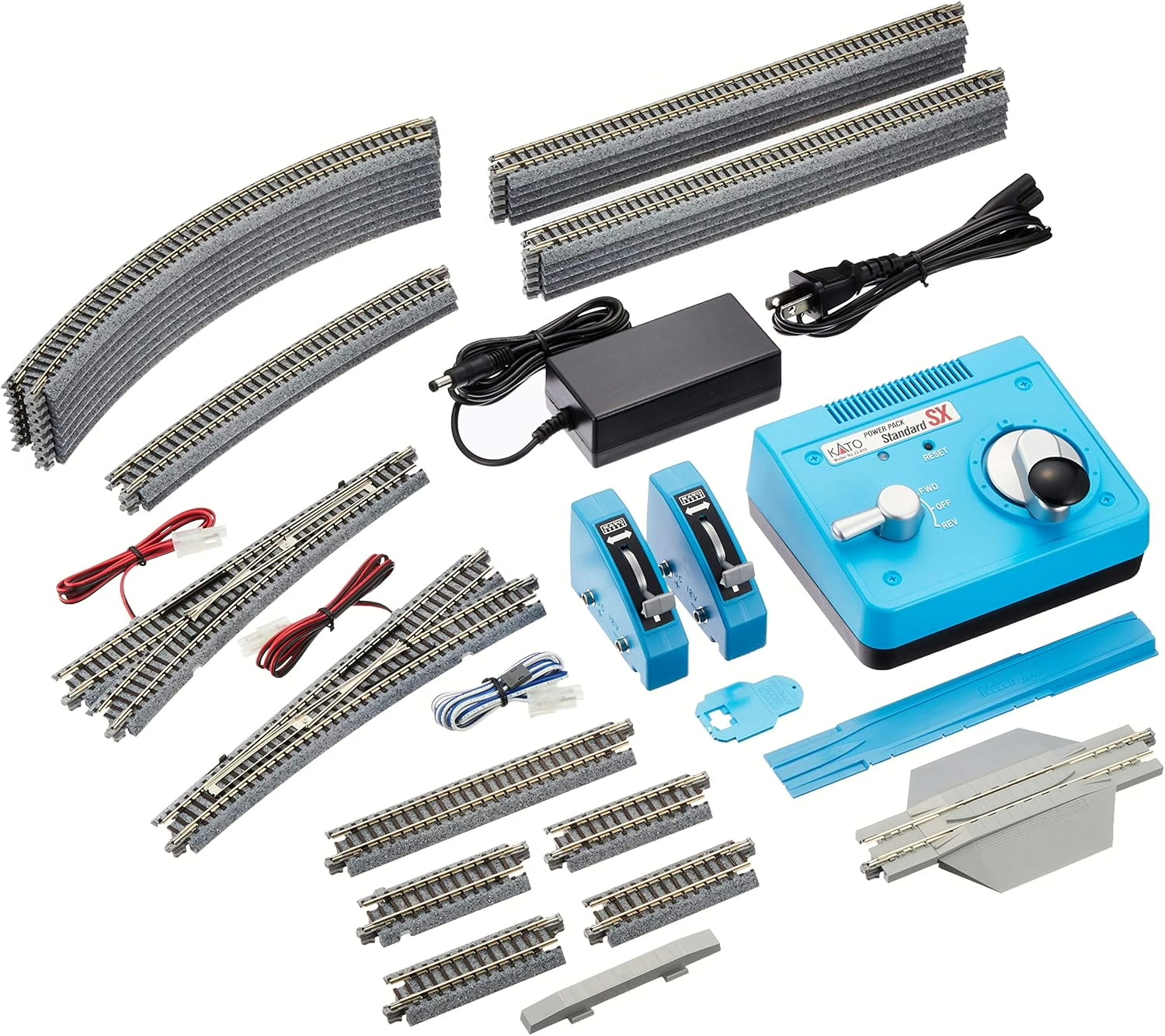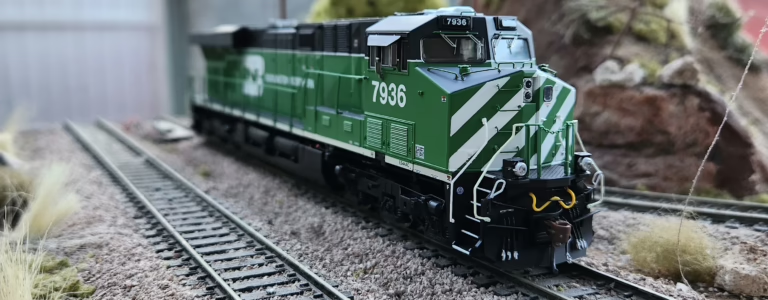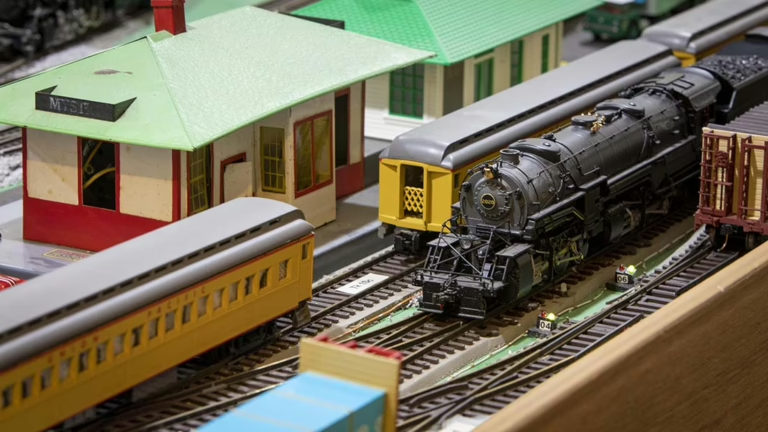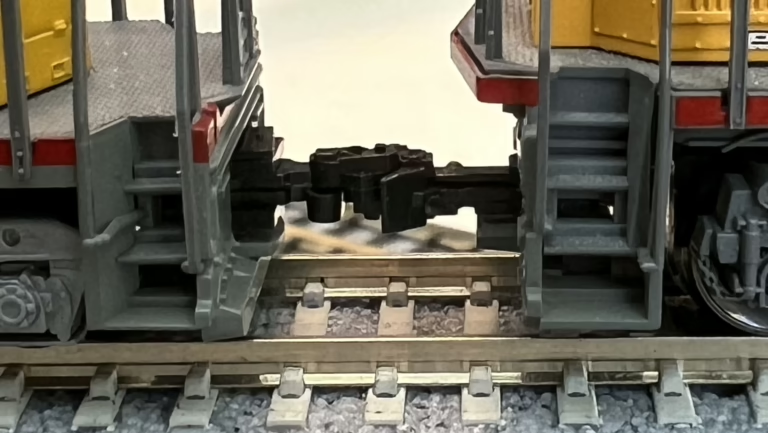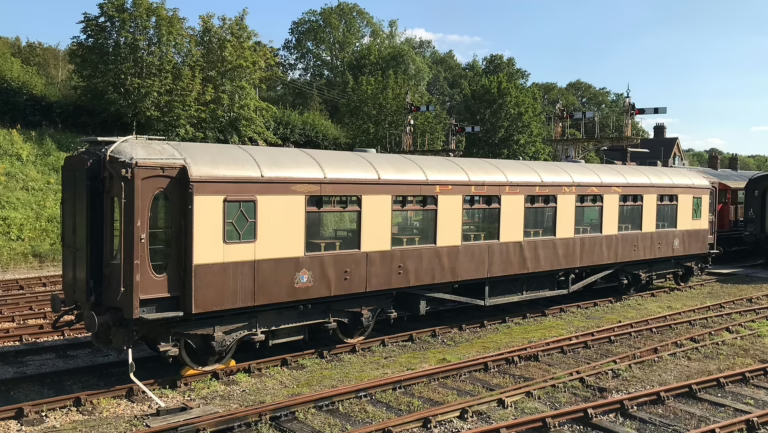N Scale Trains: Big Railroading in a Small Package
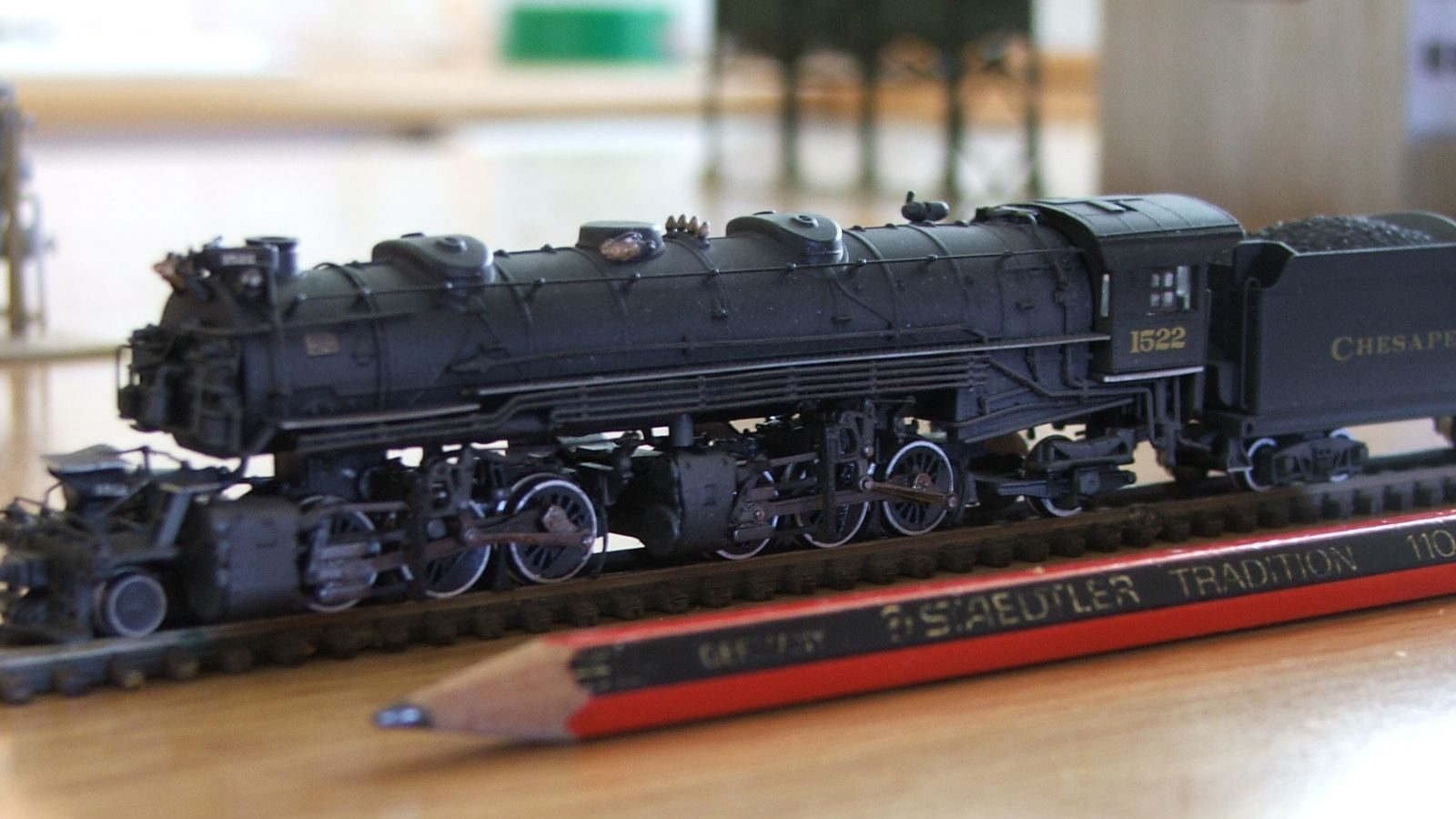
Model railroading is a world where imagination meets precision, and for those who love detail without sacrificing space, N scale might just be the perfect fit. As the second most popular model train scale in the U.S., N scale offers a unique combination of compact size and surprising realism. Whether you’re tight on room or simply fascinated by the tiny intricacies of trains, this guide will introduce you to the world of N scale trains and show why it’s earned a devoted following among hobbyists.
Below, we break down everything you need to know in a friendly FAQ format. From basics to benefits and beginner setups, you’ll find the answers that could spark your next big (or small) hobby.
What is N Scale?
N scale is a model train scale with a ratio of 1:160, meaning one unit on the model represents 160 of the same units in real life. In the U.S., this scale typically uses a track gauge of 9mm between the rails, hence the “N” (for “nine”). To put it in perspective: an average N scale locomotive is only about 4 inches long.
This small footprint allows for large and scenic layouts even on a modest tabletop. You can run long trains, simulate mountains and tunnels, and still have room to spare—making N scale ideal for apartments, offices, or small hobby rooms.

Why Choose N Scale Over HO or Other Scales?
HO scale may dominate in popularity, but N scale has carved out a passionate niche for several compelling reasons:
- Space Efficiency: You can build complex layouts in half the space of HO. A full double-loop mainline with industries, towns, and scenery can fit on a 2×4 foot board.
- Realistic Train Lengths: Longer trains are visually impressive, and N scale lets you model them realistically—even with passenger or freight consists that are 10+ cars long.
- Scenic Potential: Because everything is scaled down, landscapes appear more vast. Mountains seem taller, valleys deeper, and towns more spread out.
- Portable Layouts: Modular or suitcase layouts are easier to transport or store compared to larger scales.
On the flip side, some find the smaller size a challenge when it comes to handling or detailing—but modern manufacturing has come a long way to make N scale both accessible and durable.
Who is N Scale Best Suited For?
N scale is a great option for:
- Apartment dwellers or hobbyists with limited space.
- Modelers who enjoy long, scenic mainline operations.
- Hobbyists interested in modern or prototypical trains that need more track.
- Travelers or show exhibitors looking for a portable layout.
- Intermediate to advanced hobbyists who want detail but in a smaller format.
While children or those with dexterity issues might prefer larger scales like HO or O, many beginners find success with N scale thanks to easy-to-use starter kits.
How Do I Get Started with N Scale Model Trains?
Starting with N scale doesn’t require a massive investment. A basic setup can include a track loop, a locomotive, a few cars, and a power pack—all bundled in a starter set.
Recommended Beginner Steps:
- Choose a Starter Set: Look for sets from trusted brands like Kato, Bachmann, or Atlas. These often include everything you need to get rolling right out of the box.
- Pick a Layout Space: A 3×5 foot table is more than enough for a detailed loop with sidings. Many use folding tables or foam board for a lightweight base.
- Expand Gradually: Once you get a feel for operation and layout planning, you can add structures, scenery, switches, and rolling stock.
What Are Some Popular N Scale Brands?
Several top-tier brands specialize in N scale equipment. They include:
- Kato USA: Known for incredibly smooth locomotives and high-quality Unitrack.
- Bachmann Trains: Offers a wide range of affordable N scale sets and locomotives.
- Atlas Model Railroad Co.: Great for both track and detailed rolling stock.
- Micro-Trains Line (MTL): Specializes in finely detailed freight cars with magnetic couplers.
- Arnold (Hornby): A European brand that also offers N scale American prototypes.
Can N Scale Be Detailed Like Larger Scales?
Absolutely. In fact, N scale is renowned for the level of detail manufacturers have managed to squeeze into such small models. From etched-metal handrails on locomotives to laser-cut buildings and fine ballast work, N scale modeling can rival HO in realism when done well.
Thanks to modern 3D printing, LED lighting, and laser-cut kits, adding life to your miniature world has never been easier. Many accessories are scaled precisely, like streetlamps, cars, pedestrians, and even tiny newspaper boxes. Check Etsy for unique and custom-made items that can truly make your N scale model train layout shine!
Is N Scale More Fragile or Harder to Work With?
Because of the smaller size, handling N scale does require some patience and care—especially when assembling track or coupling cars. However, it’s far from “too delicate” for most hobbyists.
Manufacturers now design track with click-lock systems, like Kato’s Unitrack, which holds together firmly and resists misalignment. Rolling stock is more durable than it appears, and couplers have improved greatly in reliability.
If you wear glasses or have limited dexterity, tools like fine tweezers, magnifying lamps, and track alignment guides can make the process smoother. Check out this post that details some of the essential tools you’ll need for building your layouts.
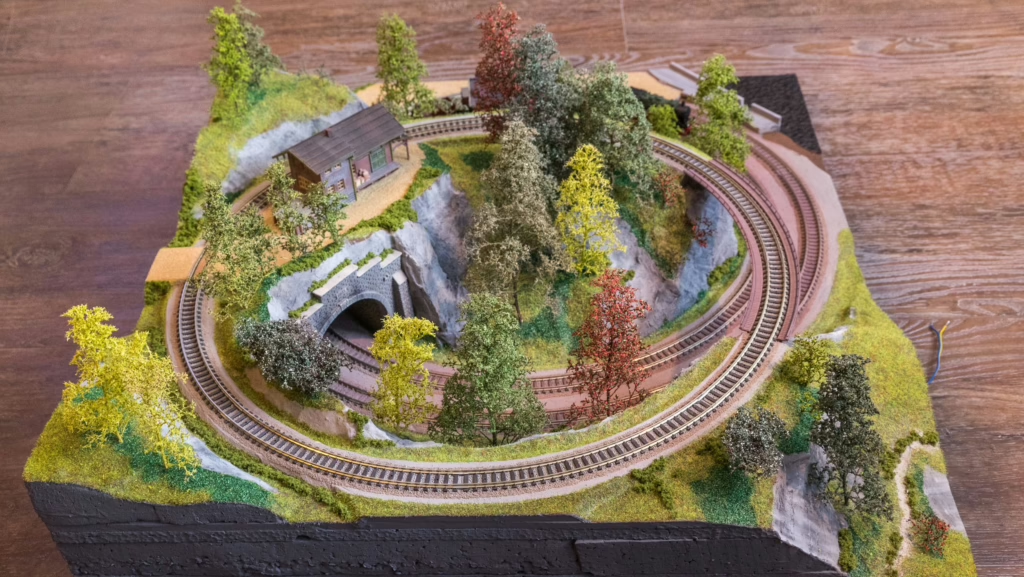
What Types of Layouts Can I Build in N Scale?
N scale gives you freedom to build:
- Loop or Oval Layouts: Fit comfortably on a coffee table or under-bed board.
- Door or Bookshelf Layouts: Use a hollow-core door to create a full scenic layout with sidings, mountains, and bridges.
- Modular Layouts: Join together segments to form a large, show-ready railroad.
- Double Deck Layouts: With more vertical space, N scale makes multi-level layouts practical in garages or basements.
N scale’s flexibility is one of its biggest strengths. You can pack more action, more trains, and more scenery into less space.
What Are Some Common Challenges with N Scale?
While N scale opens many possibilities, there are a few things to keep in mind:
- Wiring Can Be Tighter: Smaller size means less room to hide wires, though bus wiring and under-table solutions help.
- Less Weight Means More Attention to Trackwork: Because cars and engines are lighter, clean and level track is key to smooth running.
- Limited Sound Options: Sound-equipped N scale engines exist but are less common than in HO, and speaker size can affect quality.
These challenges are minor and often outweighed by the rewards. And for those who enjoy tinkering, they’re part of the fun.
How Much Does It Cost to Get into N Scale?
Like any hobby, N scale can be budget-friendly or as elaborate as you want. Entry-level sets can be found between $100–$200, while detailed layouts and collections can grow into the thousands over time.
Cost Breakdown:
- Starter Set: $130–$200
- Extra Track Packs: $20–$40 each
- Rolling Stock Cars: $10–$30 each
- Buildings and Scenery Kits: $20–$60
- Accessories (tools, power supplies): $15–$50
Final Thoughts: Is N Scale Right for You?
f you dream of sprawling landscapes, long trains, and compact setups, N scale might just be your perfect gateway into model railroading. It balances realism and efficiency like no other scale. Whether you’re just starting out or looking to downsize without compromising on fun, N scale delivers a fulfilling, imaginative hobby.
Be sure to check out our recommended N scale products found in this post and download our free N Scale Beginner’s Checklist to help plan your first layout. And if you want to know more about N Scale you can always check out our friends at Nrail.org.
